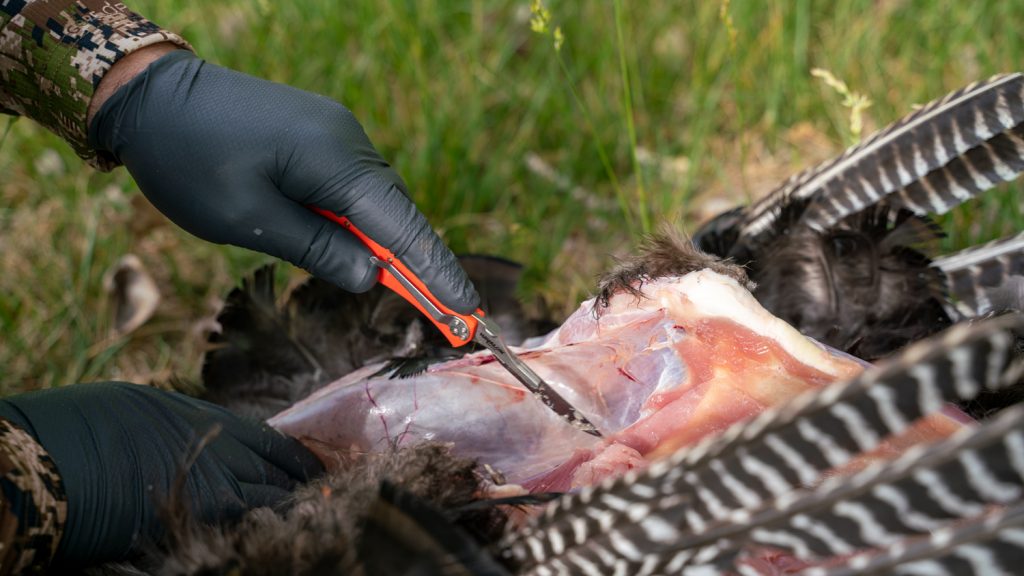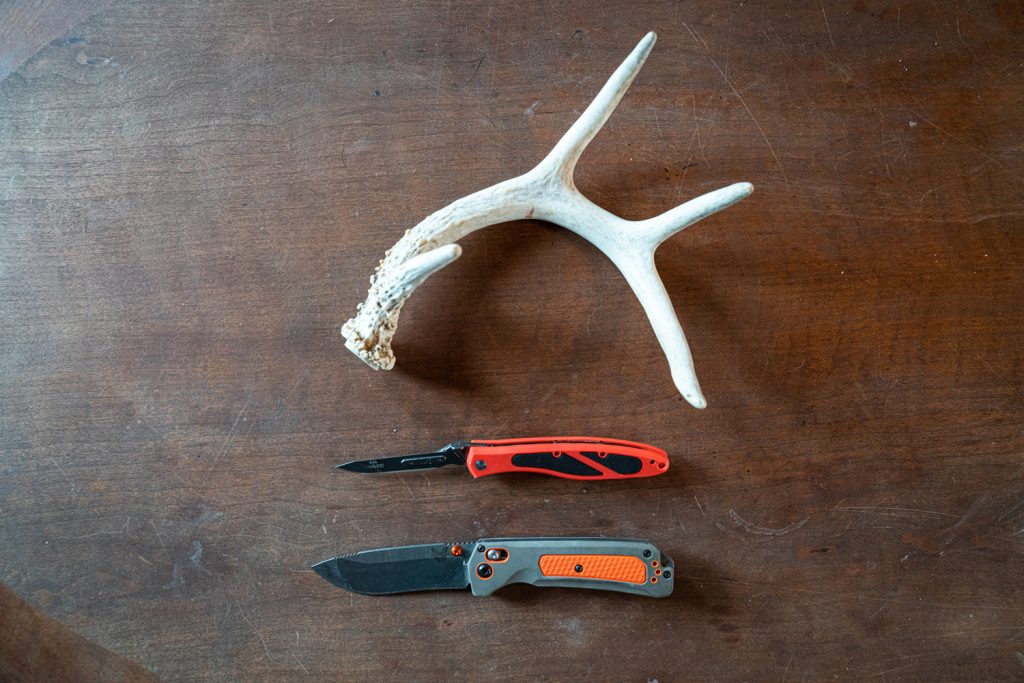Fixed vs. Replaceable Knives

I think most hunters can agree they grew up using knives that did not have replaceable blades. Nowadays you will find lots of hunters that carry them and do not remember the last time they had to sharpen a blade. If you were to ask a handful of people which style of knife they prefer, I am sure you would get different types of answers. In this article I will help point out some of the main differences and which style of knife I would choose if I could only choose one.
Fixed Blade Knives

When I first began hunting whitetails at a young age, I was given my first ever hunting knife from a dear friend of my fathers. It was a folding Buck knife and it was of course a fixed blade knife. I was about 12 years old and at that time I’m not sure if replaceable knives were even a thing yet. I was happy as can be and felt like I was that much more of a hunter now that I owned a knife.
Advantages
Firstly fixed blade knives have been around for as long as 2.5 million years according to the internet. True or not we all know mankind has had knives of some kind since the caveman years if not sooner. Fixed blade knives have a long track record of being reliable and known for getting the job done.
Over the years engineering and development has consistently gotten better and better. New types of steel are being used for the blades and a lot of the handles are ergonomically friendly. A lot of modern knives for example could skin 5-6 whitetails before needing to be sharpened. Another big advantage in my opinion is just the overall durability of the handle and blade as a whole and the fact that there are no pieces that come apart. My personal fixed blade of choice right now is the Benchmade Grizzly Creek. It is a folding knife that fits comfortably in my pocket as well as my pack. My plan to add the Benchmade Steep Country to my arsenal very soon and then I will likely use the Grizzly Creek as part of my everyday carry. In the end, you can’t go wrong with a fixed blade knife.

Disadvantages
Now let’s talk about a few of the disadvantages people run into with fixed blades. They require more maintenance because the blade will go dull after some use. With that being said you need to either sharpen the knife yourself or have someone sharpen it for you. It may require you to carry a sharpener in the field with you when performing a big job. If you happen to break the blade you are out of lock and will likely have to buy a new knife depending on the manufacturer's warranty. A broken blade could also be a big inconvenience if you are out in the field solely relying on that knife to get the job done.
Fixed Blade Knives are very known for their craftsmanship which plays a big role in the price of the knife and that could be a problem depending on your price point. A lot of us hunters usually have a budget that we need to stick to in order to reach not only our hunting goals but life goals as well.
Replaceable Blade Knives

A replaceable blade became appealing to me when a fellow shotgun hunter of mine was swapping out his knife blade and skinning deer with no problems. The fact that he could finish one deer, swap the blade, and move on to the next seemed like a no-brainer and that I needed to own one. It was not long after that I received a Havalon Piranta for Christmas and I could not wait to put it to use. The knife came with several replaceable blades and a small carrying case that could attach to my belt.
Advantages
There are a lot of upsides to the replaceable blade knives. First and foremost is the fact that you never have to worry about sharpening a knife again if you choose to go that route. The blades are pretty inexpensive and very easy to interchange. Some knives you can even interchange a saw blade for other types of duties. This can be very handy for cutting through the pelvis on a whitetail or removing ribs from a bigger game animal. These types of knives are lightweight and you typically don't even realize you are carrying them. To make things even better they have a very affordable price point which is always a plus in most hunters eyes.
Disadvantages

There’s no denying there is a lot of good about the replaceable blade knives, but there also are sacrifices that come with it. Durability is one concern a lot of people have, and I have also encountered it a couple of times. The razor sharp and ultralight blades are nice but can bend and break if you aren’t careful. This can occur when working through joints and other tough duties. Lastly the biggest downfall is the fact you have to purchase additional blades when you already own a knife, it can kind of be an inconvenience to some people. Not only are you worrying about buying the blades but also having them on hand and having enough of them out in the field.
In Conclusion

If I was only able to carry one knife I personally would choose a fixed blade knife. As mentioned before they are so ahead in the game nowadays that you can perform a lot of work before any sharpening is needed. They win the durability category which is always important to owners when they purchase an important piece of gear. A little bit of sharpening from time to time isn’t so bad if you own a quality knife. If cared for properly there is no reason a nice knife couldn’t be passed down to future generations.
Now just because I said I would choose a fixed blade over a replaceable, does not mean I will not carry both. No matter what I am hunting I have carried both just in case of needing a backup. The replaceable is so light that I don’t even know it’s in my pack and is ready to work if my fixed blade would go dull in the field. Both knives would sufficiently do the job when it comes to skinning and processing your game. I highly recommend everyone to get their hands on one of each and to see for themselves.
